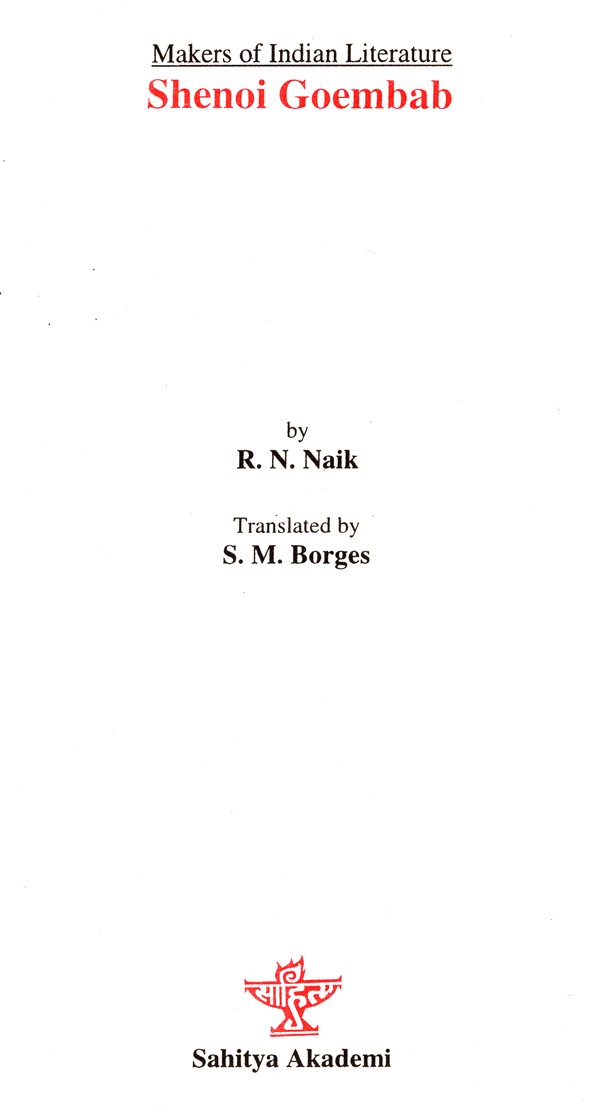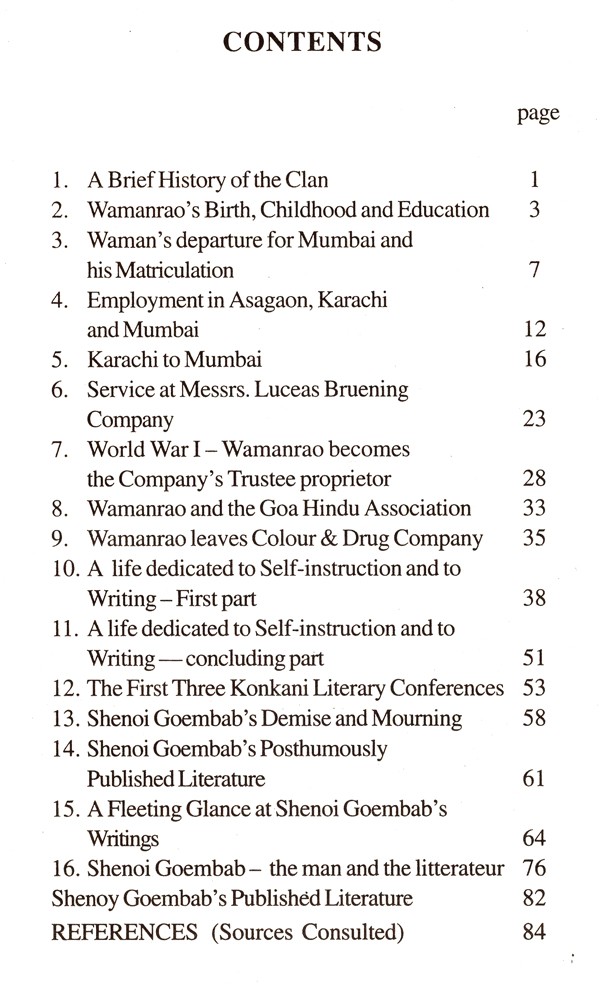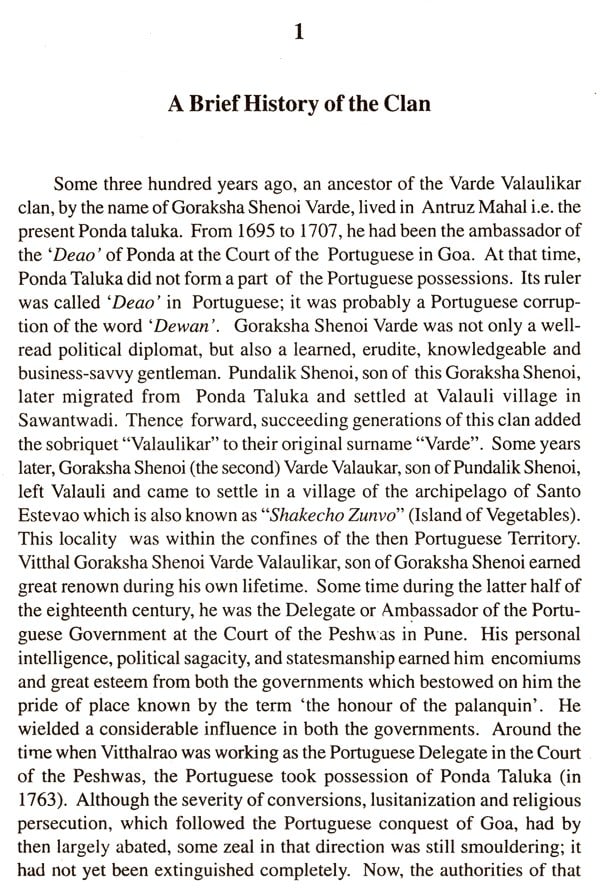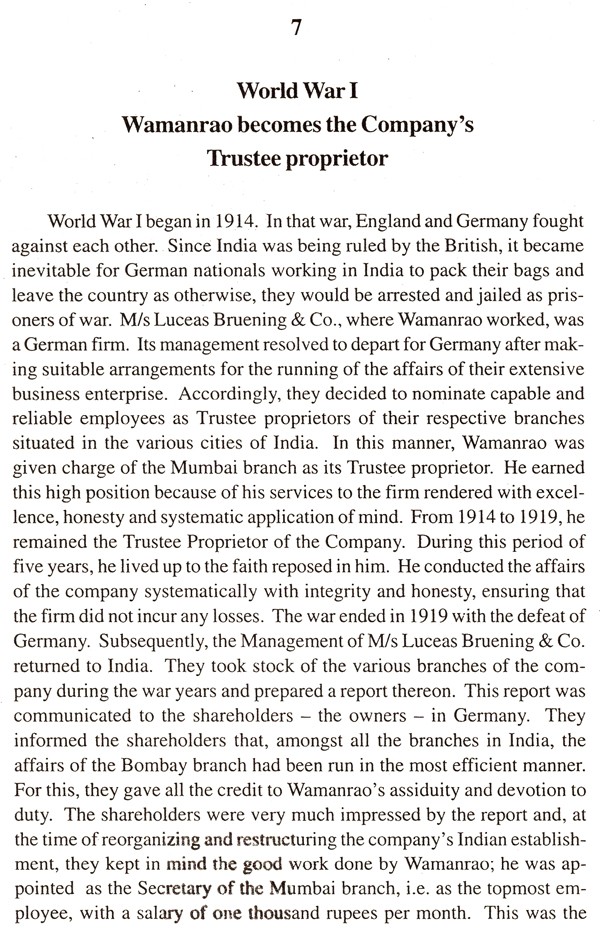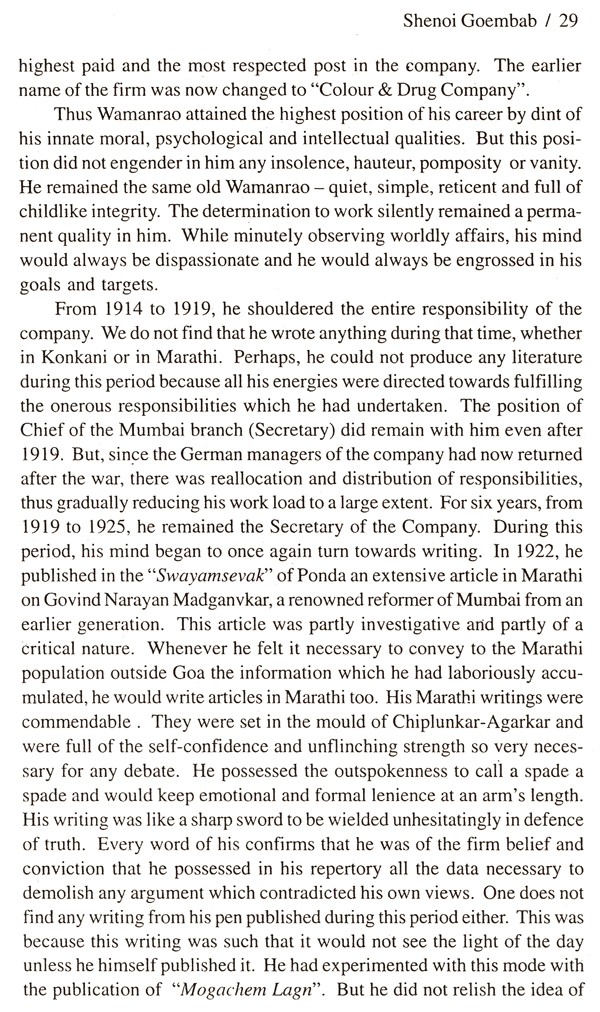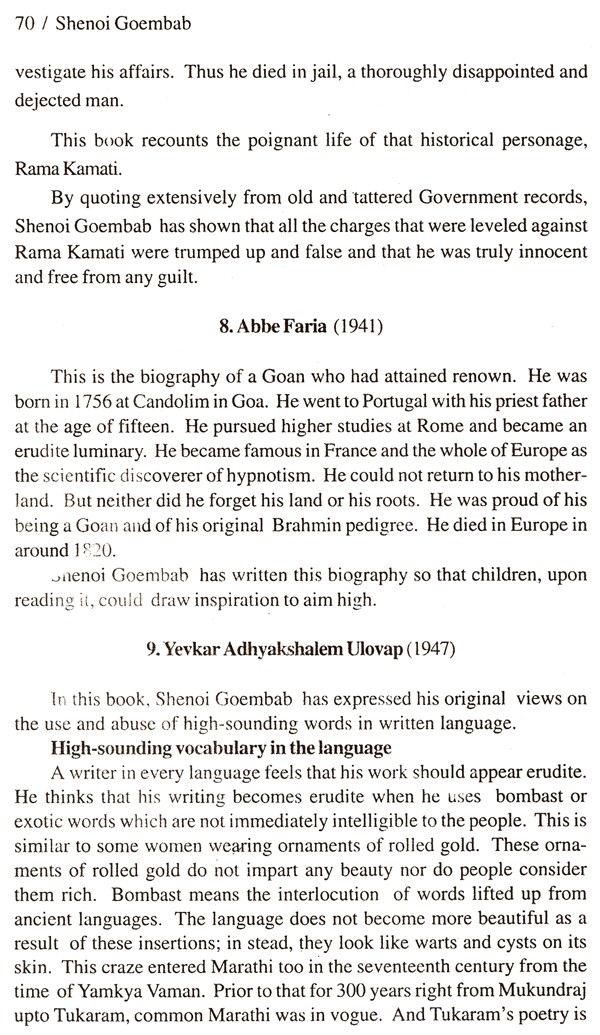
Makers of Indian Literature- Shenoi Geombab
Book Specification
| Item Code: | AZF980 |
| Author: | R.N. Naik |
| Publisher: | SAHITYA AKADEMI, DELHI |
| Language: | ENGLISH |
| Edition: | 2007 |
| ISBN: | 8126023546 |
| Pages: | 84 |
| Cover: | PAPERBACK |
| Other Details | 8.50x5.50 inches |
| Weight | 138 gm |
Book Description
Shenoi Goembab : Born in an indigent family at Bicholim which lacked basic educational facilities, he studied up to the Matriculation through the help of a well-to-do relative in Mumbai. Be yond this, he was a self-taught man.
Centuries of foreign subjugation had drained the Konkani people of sense of ethnic self-respect. Deliberate linguistic suppression during more than 300 years by the colonial power had reduced the once vibrant Konkani language to a patois. The Konkani people, especially in Mumbai, were reluctant to use their mother tongue in public for fear of being ridiculed.
It was at such a juncture that Shenoi Goembab undertook the onerous task of infusing pride and self-respect in the Konkani popu lace and of raising their mother tongue to the level of a literary language.
He researched into not only the glorious history of the Konkani people but also the phonetics and grammatical structure of their language. In addition, he wrote Konkani books covering such genres as poetry, drama, biography, fiction and even a translation of the Bhagwad Geeta. He thus laid the foundation of Modern Konkani literature and earned the sobriquet "Father of Konkani Renaissance".
R. N. Naik : An educationist who was also a Konkani literateur. He has rendered into Konkani some literary works of Mahatma Gandhi, Rabindranath Tagore, Leo Tolstoy and Kahlil Gibran. He has written literary essays and also translated into Konkani many stories from several languages. In this work, besides tracing the life of Shenoi Goembab, the author has explained the situation under which his literary works emerged. In addition, he has provided a short review of that literary output, with examples. They bring out the method of logical argumentation and the simple flowing literary style of Shenoi Goembab.
**Contents and Sample Pages**
